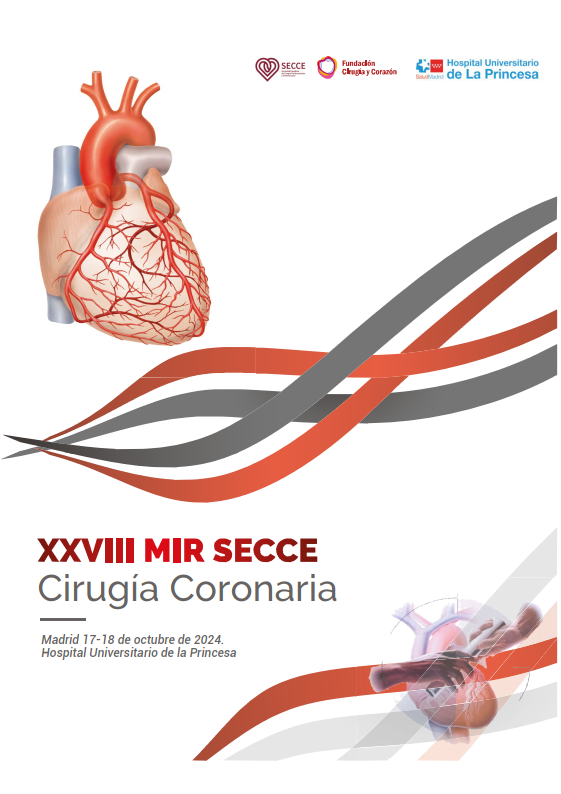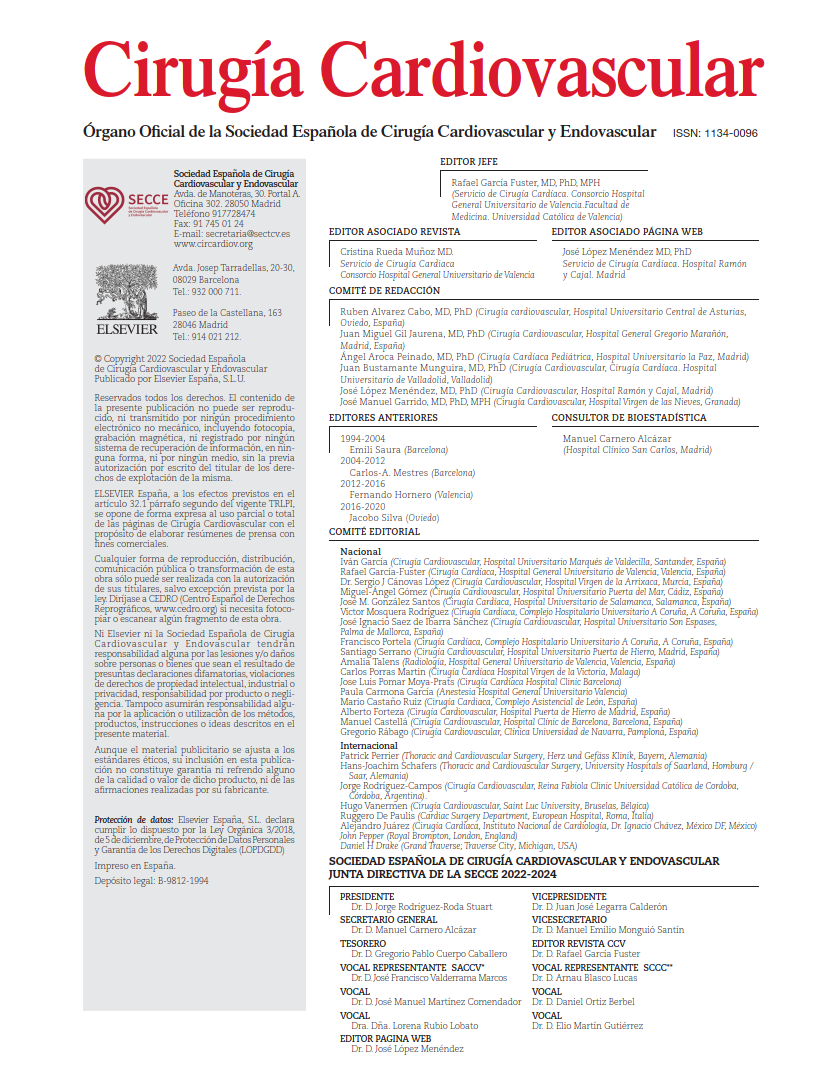Over the past decade, the growth of TAVI has been relentless. What began as an alternative for inoperable or high-risk patients has evolved into an increasingly frequent treatment for younger and lower-risk populations. This progressive shift in age boundaries culminates with the 2025 European guidelines, which set 70 years as the new inflection point between surgery and TAVI—based on data with only five years of follow-up.
In this context, the study published in The Journal of Thoracic and Cardiovascular Surgery compared both strategies—TAVI and SAVR—in patients under 65 years, a population for whom clinical evidence remains limited. Its objective was to determine whether the early outcomes of TAVI justify its expansion to patients with longer life expectancy and greater prosthetic durability demands.
The study provides an opportunity to reflect on the evolving treatment paradigm for severe aortic stenosis, particularly in an age group where the balance between immediate benefit and long-term sustainability becomes especially delicate.
The analysis included more than 12000 patients under 65 years treated for severe aortic stenosis, approximately 20% of whom underwent TAVI and the remainder SAVR, according to contemporary multicenter registry data. The primary aim was to compare early and midterm clinical outcomes, as well as temporal trends in the use of both techniques within this traditionally surgical age group.
During the study period, the use of TAVI increased from less than 5% to more than 25% of all procedures in patients younger than 65, reflecting a steady expansion beyond its original indications. Thirty-day mortality was comparable between TAVI and SAVR (approximately 1.5% in both groups), with a slight early advantage for TAVI regarding recovery time and hospital stay. However, the need for permanent pacemaker implantation was nearly three times higher after TAVI (20% vs 7%), and moderate-to-severe paravalvular regurgitation occurred in about 10% of cases versus less than 2% after surgery. At five years, reintervention rates were also higher with TAVI (6–7% vs 2–3% with SAVR).
Overall survival at midterm follow-up remained similar between both strategies (around 85% at five years), although echocardiographic follow-up revealed a tendency toward progressive hemodynamic deterioration in transcatheter valves. Most surgical bioprostheses maintained stable gradients, whereas a relevant proportion of TAVI valves showed a gradual rise in mean gradient or persistent mild paravalvular leaks.
Taken together, these results suggest that TAVI may represent a valid alternative for carefully selected young patients; however, the absence of robust data beyond five years prevents definitive conclusions on structural durability and long-term safety in this population.
The authors conclude that, in patients younger than 65 years, TAVI achieves early outcomes comparable to surgery, with faster recovery but higher rates of reintervention and valvular complications. They emphasize that the lack of long-term follow-up precludes its generalized use in young patients and advocate for cautious case selection guided by the Heart Team and lifetime management principles.
COMMENTARY:
The debate surrounding the expansion of TAVI into progressively younger patient populations is arguably one of the most significant and controversial issues in modern cardiology. What began as a therapy reserved for inoperable or high-risk patients has rapidly evolved—within barely a decade—into an alternative proposed even for individuals in whom surgical bioprosthesis implantation would traditionally be indicated. This paradigm shift is not the result of new, robust evidence, but rather the momentum of a technique that has proven safe and effective in populations far removed from those now being considered.
The challenge lies not in the technical quality of TAVI but in the limits of the available evidence. The most frequently cited randomized trials (PARTNER 3 and EVOLUT Low Risk) provide follow-up of up to five years—clearly insufficient for patients whose life expectancy often exceeds 20 or even 30 years. Although the NOTION trial recently reported 10-year data showing reasonable valve durability, the study population was elderly and small, with few younger patients, making extrapolation unreliable. Under these circumstances, it is premature to claim therapeutic equivalence between TAVI and surgery when transcatheter valve durability remains uncertain.
The 2025 ESC/EACTS Guidelines, by lowering the reference age to 70 years, have accelerated this shift. Yet, the decision seems driven more by trends than by evidence. The current study reinforces that, although early clinical outcomes of TAVI are favorable, rates of reintervention, paravalvular leakage, and pacemaker implantation remain notably higher than after conventional surgery. For younger patients—where durability and reproducibility are crucial—such differences are far from trivial: they can determine whether treatment is definitive or merely the first in a sequence of reinterventions, each carrying added procedural risk and cumulative morbidity.
Another key consideration is that reinterventions after TAVI are associated with substantially higher mortality than reoperations on surgical bioprostheses. Contemporary multicenter registries consistently report mortality rates between 15% and 25% for TAVI explantation—significantly exceeding those observed after conventional redo valve surgery. This fact carries particular weight in young patients, who face a high probability of requiring one or more reinterventions throughout life. Therefore, the initial therapeutic choice should not hinge solely on short-term procedural risk but also on the feasibility and safety of potential future reoperations.
Registry data also reveal striking regional and institutional variability in the adoption of TAVI, suggesting that its expansion is influenced by practice dynamics and resource availability as much as by clinical criteria. While growth in Spain has been more gradual and homogeneous, the same trend toward broadening indications and expanding structural programs can be observed.
It is equally important to acknowledge that this debate is not purely technical but cultural. The “TAVI effect” has produced patients who actively request percutaneous valves and physicians influenced by time pressure or device availability. In such an environment, the Heart Team’s role should be strengthened, not diluted. Decisions must remain shared, evidence-based, and guided by the patient’s lifetime perspective rather than by the inertia of a technological trend.
There is also a conceptual risk in this shift—confusing convenience with equivalence. That a procedure is less invasive or offers faster recovery does not inherently make it superior. Surgical aortic valve replacement continues to provide a durable, reproducible, and safe solution, particularly in experienced hands. In contrast, TAVI durability remains based largely on extrapolations rather than definitive data.
For these reasons, it is prudent to maintain surgery as the preferred option in young, low-risk patients with suitable anatomy, reserving TAVI for those with specific contraindications or clinical conditions that substantially increase operative risk or reduce life expectancy.
Ultimately, both the study and the guidelines convey a message of openness toward younger candidates for TAVI, but the surgeon must remain the voice of caution. The goal is not to hinder innovation but to accompany it with solid evidence, structured follow-up, and a realistic appraisal of long-term consequences. Because, as is often the case in medicine, the key question is not whether we can do it—but whether we should do it yet.
REFERENCE:
Alabbadi S, Bowdish ME, Sallam A, Tam DY, Hasan I, Kumaresan A, et al. Transcatheter versus surgical aortic valve replacement in patients younger than 65 years in the United States. J Thorac Cardiovasc Surg. 2025 Sep;170(3):698–706.e19. doi: 10.1016/j.jtcvs.2024.12.025.



